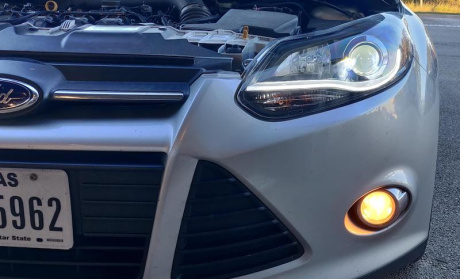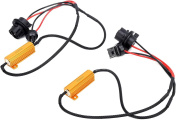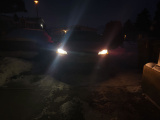
Headlight conversion is a very common thing to do. If your stock headlights are too dim and dull, or if you expect better performance for off-roading and other activities, then turning to brighter, more capable headlights is the best option. But the question remains: Do you need a conversion kit to switch to LED headlights or not?
The necessity of conversion kits for LED headlights depends on several factors. As always, your vehicle, its model year, and sophistication level are among the most important factors. The type of original equipment headlights can also influence the decision.
Key Takeaways:
- Converting to LED headlights involves understanding the compatibility of your vehicle, as the necessity of conversion kits depends largely on the vehicle's model year and the type of original equipment headlights.
- Retrofitting allows older vehicles to accommodate modern LED bulbs, but it's crucial to ensure that the conversion is done correctly to avoid issues.
- It's essential to match the LED bulbs appropriately with the headlight assembly to avoid glare.
- Factors like the cost, potential compatibility issues, and the required adjustments should be considered before making the change.
Headlights are designed with several important things in mind, mostly revolving around functionality and design simplicity. Everything matters: reflector shape, lens design, filament depth, and bulb orientation. All these nuances determine how light is distributed on the road.
That's why many aftermarket LED bulbs might physically fit into the factory housing, but they will never be able to offer the same performance. Everything inside the headlight assembly needs to be altered to facilitate such a change. LED bulbs work differently than HIDs or halogen bulbs and require certain adjustments.
That's where conversion kits come in handy. They include components designed specifically for LED bulbs, such as compatible reflector assemblies and power conditioners that ensure good light distribution and prevent flickering and other problems.
Additionally, some modern vehicles have complex electrical systems. This can complicate the conversion process with error codes, warnings, and malfunctions. But thankfully, some advanced LED conversion kits have everything you need to successfully complete the upgrade.
Can You Swap Normal Headlights for LED?

It is tempting to say yes. Any vehicle with halogen headlight bulbs can potentially be converted to LEDs using a special kit. However, not all car models are perfectly compatible with LED headlights. This can be due to specific wiring or electrical system nuances. But some vehicles just don't work with LEDs at all.
You might manage to fit new LED bulbs into the original equipment housing, but no amount of adjustments and modifications will make them work as they should. You might run into issues like flickering or burnt-out bulbs because of these compatibility problems.
Thankfully, there are many people willing to share their experience with converting such vehicles to LEDs. It is always better to learn from someone else's mistakes than to make them yourself. Take some time to go through popular forums and communities to gather information on your car model and its conversion to LED headlights.
What Do I Need to Convert to LED Headlights?
Headlight conversion kits are pretty versatile in their contents. They are often made for specific car models and contain everything you need for successful conversion. So, as long as you have access to basic tools and parts provided by a conversion kit, you're good to go.
How to Convert Headlights to LED?
- Gather all the necessary instruments, like screwdrivers and a compatible conversion kit and grab a pair of rubber gloves.
- Disconnect the battery to ensure you won't be accidentally shocked or trigger any electrical issues.
- Depending on your car model, you might need to remove some components or covers to gain access to the bulbs. This could include removing the entire headlight assembly or just a dust cover.
- Wear gloves when you work with the headlight bulbs to protect them from grease.
- Follow the conversion kit instructions provided by the manufacturer.
- Check the headlights and finish reassembling.
Do You Need Anything Special for LED Headlights?

Sometimes, LED conversion requires some additional parts. LED bulbs differ from halogen bulbs in many ways. They consume power differently, and they don't heat up as much, and sometimes this difference can cause errors in the computer.
Usually, LEDs require special relays and heat sinks to support them. Unlike halogens, LED headlights produce heat at the back end of the bulb, so they need heat sinks that will help them properly dissipate the heat.
Vehicles usually have a CAN-bus system that monitors headlight bulb functionality. You will need to replace it with an appropriate one because it might send signals that something is going wrong with the headlights once you switch to LEDs.
If your headlights begin to flicker after conversion, there is a way to fix that too. By adding anti-flicker devices or capacitors, you can remedy this by regulating the current going to the LED.
Sometimes an additional wiring harness is needed. Before you start taking your headlights apart, I recommend researching the question thoroughly. You should ensure your vehicle is compatible with the LEDs before you start and know what you need to adjust.
Is It OK to Replace Halogen with LED?

Yes, it's okay to replace your old headlights with LEDs if your vehicle is compatible. Some vehicle models even accept LEDs as an alternative and require no modifications whatsoever. LED headlights provide better illumination, consume less energy, and they also can last much longer than other types of bulbs.
LEDs tend to last longer than halogens. While a typical halogen bulb might last anywhere from 500 to 1,000 hours, LEDs can last over 30,000 hours, depending on their quality and usage. This means fewer replacements in the long run.
Is Halogen to LED Illegal?
Most trustworthy resources claim that conversion from halogens to LEDs can be illegal. This largely depends on the jurisdiction of the country or state you are in, as lighting standards can vary.
The biggest issue is that LED conversion is considered a serious headlight modification. But what of it? The thing is, headlights are not just a pretty pair of flashlights in front of your car. They are a crucial safety feature that you should not tamper with.
Most people change headlights to LEDs just to make them look better or to get better illumination for off-roading or for other reasons. And they forget that besides their utility and aesthetic purposes, headlights ensure that you are clearly visible to other people on the road and they also let you see obstacles in the distance.
That's why regulations concerning headlights and their modifications are so strict.
What Is The Disadvantage of LED Headlights?
Previously, we have briefly touched upon the benefits of LED conversion, but it's not all unicorns and rainbows. These headlights also have drawbacks you should know about before you start. Headlight conversion is a commitment, after all. Of course, nobody will stop you from deciding to revert back to halogens, but knowing about possible disadvantages can save you a lot of time, effort, and money.
The biggest issue with LED bulbs is their primary benefit. LED headlight bulbs are extremely bright, and if installed incorrectly, they can blind oncoming traffic and cause excessive glare. This is a significant issue because it's not just irritating to other drivers; it can potentially cause dangerous situations on the road and put you or others in harm's way.
That's why you should be very careful when matching the headlight type to the assembly. Certain types of headlight assemblies create too much glare when combined with LED bulbs but work perfectly with halogens. During conversion, you should adjust the light output of the new bulbs.
Can you put LED Lights In Older Cars?

The process of putting new LED bulbs in older vehicles with OEM halogen bulbs is called retrofitting. It means that you can actually pick modern LED bulbs that fit perfectly into older halogen sockets. They will look stunning and give you much more illumination.
Of course, most older vehicles are not compatible with LED technology. This will require special adjustments to wiring and headlight assembly. But special retrofitting LED conversion kits can assist you in this process.
To sum it up, it is possible to put LED lights in older vehicles with a little work involved. Just make sure to do your research before you buy anything.
It is best to consult a professional about such modification. Older vehicles have different electrical systems that can be bad for LED bulbs, There is no use converting to LEDs if they just keep burning out all the time.
Is It Worth Converting to LED?
The answer is very personal, it depends on your individual needs. There are serious advantages to LED conversion but there are also things to consider. Sometimes, the benefits outmatch the possible drawbacks and then, of course, the answer is yes, it is worth it. But that doesn't necessarily work for every driver.
LED lights offer several advantages over traditional halogen and incandescent bulbs. They are more energy-efficient, they outshine their counterparts in longevity by lasting up to 50,000 hours, compared to just 1,000 to 2,000 hours for halogen bulbs.
Additionally, LEDs emit a brighter light, enhancing visibility, especially when used in vehicles. But they also cost a lot more. For some vehicle owners, the price of LED headlights is not that sustainable at all. Especially if are some compatibility issues arise later.
Not all headlight assemblies are compatible with LED lights. Sometimes, convertion can require additional components and troubleshooting to make it all work.








